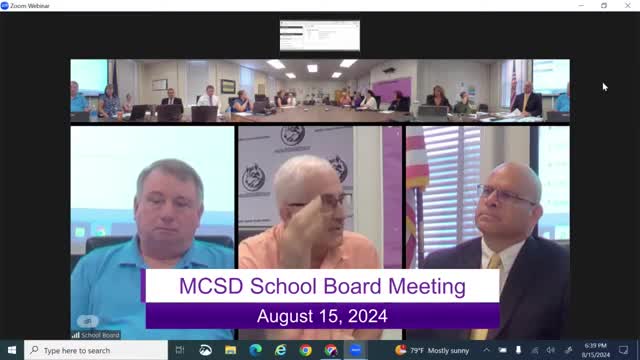Teacher's heroic intervention prevents school shooting tragedy
August 16, 2024 | Mifflin County SD, School Districts, Pennsylvania
This article was created by AI summarizing key points discussed. AI makes mistakes, so for full details and context, please refer to the video of the full meeting. Please report any errors so we can fix them. Report an error »

In a recent government meeting, discussions centered around critical issues of student mental health and school safety, highlighting the tragic consequences of inadequate support systems. A poignant case was presented involving a 14-year-old student who took his own life on school property, following the loss of his parents six months prior. The superintendent noted the absence of warning signs, prompting a member to emphasize that the lack of visible distress can itself be a significant indicator of underlying issues.
The meeting also addressed the importance of effective communication among mental health professionals and school officials. It was noted that while psychologists and psychiatrists are required to report active threats, they are not obligated to report patterns of concerning behavior unless an immediate danger is present. This gap in reporting could lead to missed opportunities for intervention, as evidenced by instances where students receiving professional help did not have their situations adequately communicated to school authorities.
A notable highlight of the meeting was the account of Molly Hutchins, a middle school teacher in Tennessee, who successfully de-escalated a potentially violent situation involving a student armed with a firearm. Hutchins spent hours talking with the student, ultimately persuading him to relinquish the weapon. Her experience underscored the critical role educators can play in crisis situations and the need for training in conflict resolution and mental health awareness.
The meeting concluded with a presentation from Teresa, vice president of Delta Development Group, who provided insights into ongoing initiatives aimed at enhancing school safety and mental health resources. The discussions underscored a collective call for improved collaboration and communication among all stakeholders involved in student welfare, emphasizing that proactive measures are essential to prevent future tragedies.
The meeting also addressed the importance of effective communication among mental health professionals and school officials. It was noted that while psychologists and psychiatrists are required to report active threats, they are not obligated to report patterns of concerning behavior unless an immediate danger is present. This gap in reporting could lead to missed opportunities for intervention, as evidenced by instances where students receiving professional help did not have their situations adequately communicated to school authorities.
A notable highlight of the meeting was the account of Molly Hutchins, a middle school teacher in Tennessee, who successfully de-escalated a potentially violent situation involving a student armed with a firearm. Hutchins spent hours talking with the student, ultimately persuading him to relinquish the weapon. Her experience underscored the critical role educators can play in crisis situations and the need for training in conflict resolution and mental health awareness.
The meeting concluded with a presentation from Teresa, vice president of Delta Development Group, who provided insights into ongoing initiatives aimed at enhancing school safety and mental health resources. The discussions underscored a collective call for improved collaboration and communication among all stakeholders involved in student welfare, emphasizing that proactive measures are essential to prevent future tragedies.
View full meeting
This article is based on a recent meeting—watch the full video and explore the complete transcript for deeper insights into the discussion.
View full meeting